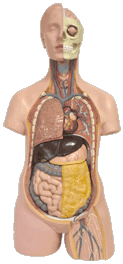At WiseGEEK, we're committed to delivering accurate, trustworthy information. Our expert-authored content is rigorously fact-checked and sourced from credible authorities. Discover how we uphold the highest standards in providing you with reliable knowledge.
What Is Clofarabine?
Clofarabine is a type of drug classified as an antineoplastic or chemotherapeutic agent. The medication is used as a treatment for acute lymphoblastic leukemia (ALL), one of the more fatal and severe type of cancers. It was approved by the Food and Drug Administration on the 28 December 2004, but is still required to have “further clinical studies.”
Most often, clofarabine is not the first choice of treatment for cancer patients, but is instead used as the last resort only if two previous treatments have been ineffective. Recurring ALL and other cancers are also treated with this medication, as returning cancers are often more fatal. Recipients of the medication are usually children under the age of 21.

Clorafabine works by eradicating malignant cells present in the body, but it also impedes the healthy cells from creating new RNA and DNA, thus preventing new cells from ultimately being created. This can result in some negative side effects, such as general pain and weakness, vomiting, symptoms of cold and flu, and chills. Other common side effects include blurry vision, difficulty in breathing, appetite loss, and pale skin. Other side effects such as fast heart rate, low blood pressure, and presence of lung fluid should be grounds for an immediate visit to an oncologist.
The doctor and the patient should first talk before going into a clofarabine treatment. The patient should tell as much details as possible, such as food and medication allergies, other health problems being experienced, and other medications taken. Present and future pregnancies should also be discussed, as the medication can affect fertility. Doctors, on the other hand, would usually prohibit their patients from taking any vaccines, as the clofarabine can render the vaccine ineffective, or worse, can bring about some infections. Drinking more liquids may also be suggested to prevent experiencing some side effects.
Clofarabine is introduced to the body usually through a needle in the veins. A treatment process may last for up to two hours a day and is done for five consecutive days. Another treatment cycle will be performed with an interval of two to six weeks, depending on how fast the body responds to the medication.
Patients undergoing a clofarabine treatment should avoid any rigorous activities — such as sports — that could lead to some injuries, wounds, and bruises. An oncologist may also suggest other ways to go about brushing and flossing of teeth, as both can lead to bleeding. Patients will most likely have a weaker immune system and should avoid people with infections, colds, and cough.
AS FEATURED ON:
AS FEATURED ON:










Discuss this Article
Post your comments